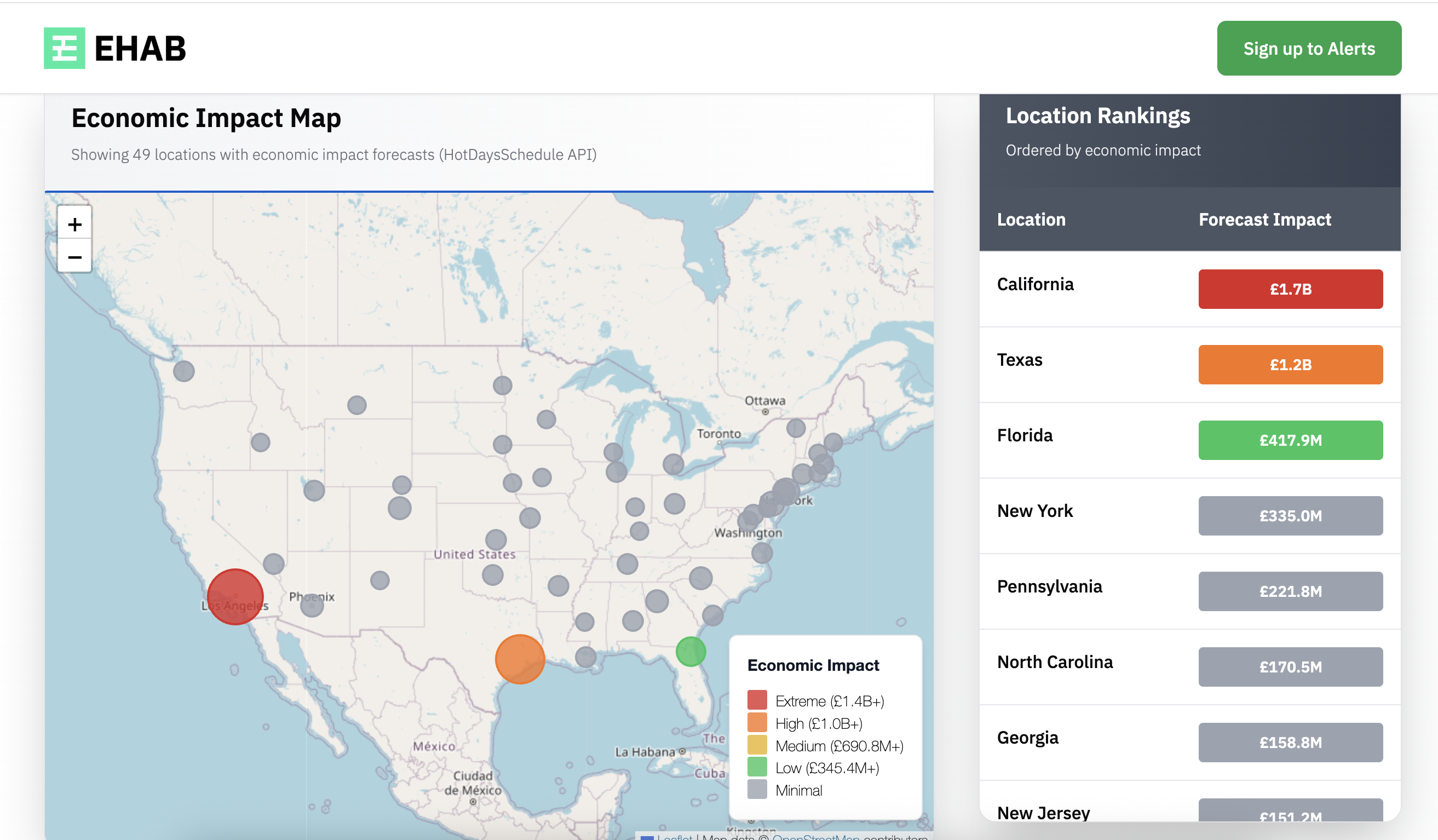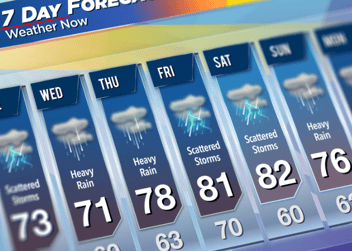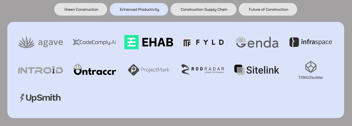TL;DR: Live Reports Now Available For: United States, Canada, France, Spain, United Kingdom, Australia, Germany, Italy, Netherlands, Belgium, Austria, Switzerland, Portugal
Across cities, farms, construction sites, and hospitals, the impacts of extreme heat are becoming unmissable. But the real issue isn’t the rising temperature, it’s our sluggish response.
Heatwaves are not just climate signals. They are economic shocks. They are operational hazards. They are public health crises. And yet, most organisations still treat them as background weather noise.
At EHAB, our goal is to change that. Working with DSR & Partners – The Climate Adaptation Advisors, Daniel Schmitz-Remberg and Dr. Andrea Nakoinz, we built an interactive, daily-updating heatwave report that links temperature anomalies directly to financial impact. It started with Germany. Today, it expands to 13 more countries.
But let’s be clear: this isn’t just about a map. It’s about the process it triggers.

The Real Cost of Heat
Construction: Outdoor work slows. Timelines slip. Costs balloon.
Agriculture: Crops stress, livestock suffer, yields fall.
Energy & Utilities: Demand spikes. Grids strain. Efficiency drops.
Transport & Logistics: Infrastructure warps. Deliveries delay. Cold chains break.
Healthcare: Admissions surge. Staff burn out. Facilities stretch thin.
According to Swiss Re and Munich Re, climate-linked disasters already cost over $300 billion annually. And that number is climbing.
But the true danger? It’s in the near-term blind spots. Boards and governments model 2050. Our platform asks: What are you going to do next week?
Why Process Matters More Than Data
Heat risk data is everywhere. What’s missing is structured response.
Adaptation only works if it’s embedded in a process:
- Weekly risk reviews based on live forecasts
- Site-specific triggers for operational changes
- Accountability structures for adaptation
- A feedback loop for learning and iteration
As Daniel Schmitz-Remberg puts it: "The real question isn’t whether we have the data. It’s whether we have the governance to act on it."
That’s why our tools are designed to ignite difficult conversations:
- Where are our assets most vulnerable?
- What is the productivity cost of this week’s forecast?
- Who decides on mitigation measures?
- How will we know if they worked?

Health, Heat, and Responsibility
The human body has limits. Pregnant women, outdoor workers, those on psychiatric medications, these are the frontlines of exposure. And under workplace safety law, employers have a legal obligation to protect them.
Adaptation doesn’t need to start big:
- Adjust shifts
- Increase water access
- Plan for shade and rest
- Ask your staff what works
Air conditioning helps, but it’s no silver bullet. Globally, it contributes ~1 billion tonnes of CO₂ annually. That’s why process and sustainable design must go hand in hand.
Countries Now Covered in the Live Heat Risk Report
Our daily-updating system is now live in:
- United States: 50 states with state-level GDP & impact
- Canada: 13 provinces & territories
- France: 13 administrative regions
- Spain: 17 autonomous communities
- United Kingdom: 12 regions
- Australia: 8 states & territories
- Germany: 16 federal states
- Italy: 20 regions
- Netherlands: 12 provinces
- Belgium: 3 regions
- Austria: 9 federal states
- Switzerland: 26 cantons
- Portugal: 7 regions
From Awareness to Action
We don’t need more headlines. We need systems.
If you're a business leader, ESG head, insurer, planner, or policymaker, the message is simple:
Heat is here. The risk is real. The cost is rising.
Start small. Review the forecast. Set a trigger. Involve your team. And most importantly: act.
Want to build a weather and climate adaptation process into your organisation? 👉 https://lnkd.in/epurKH7p



